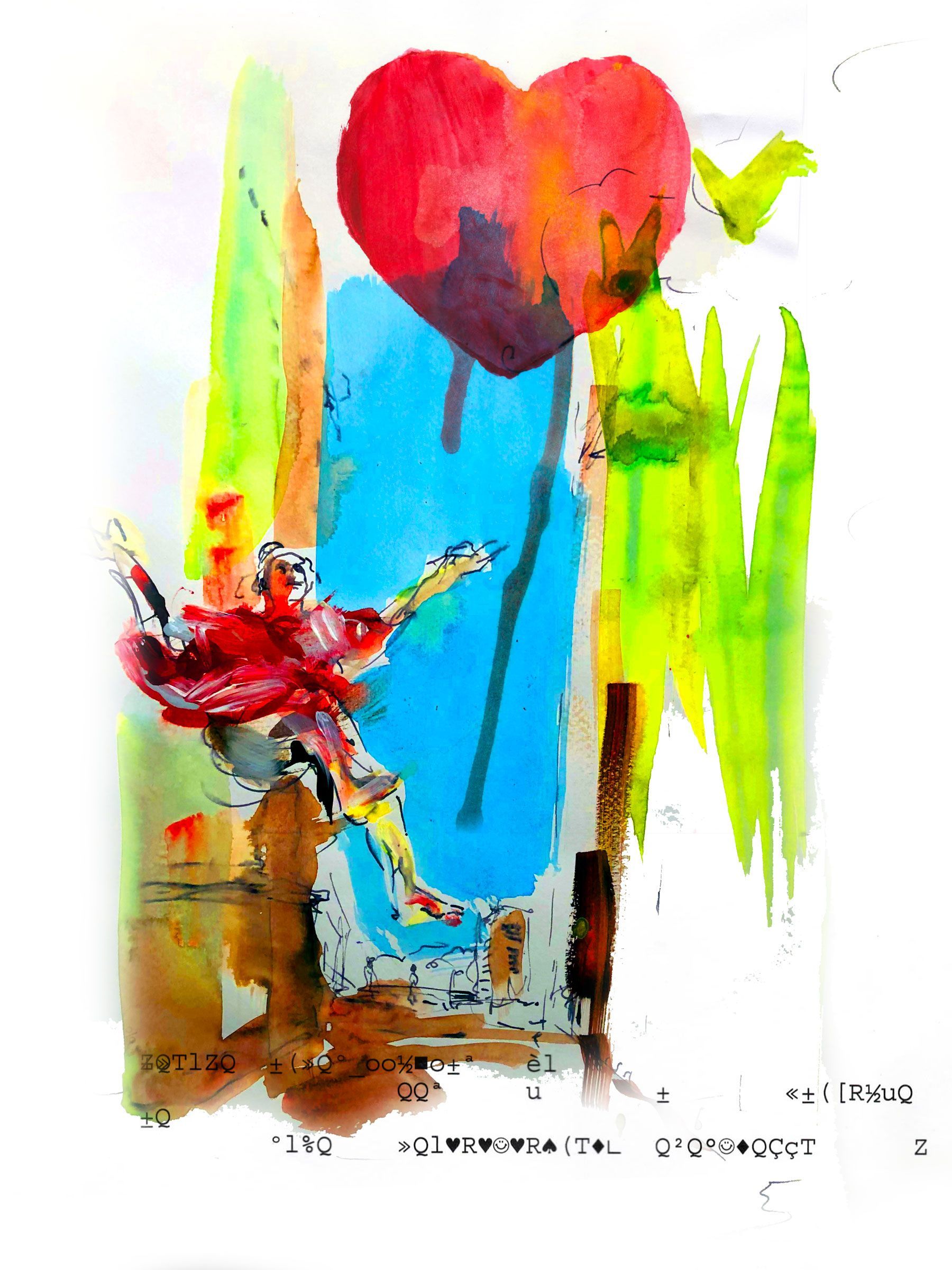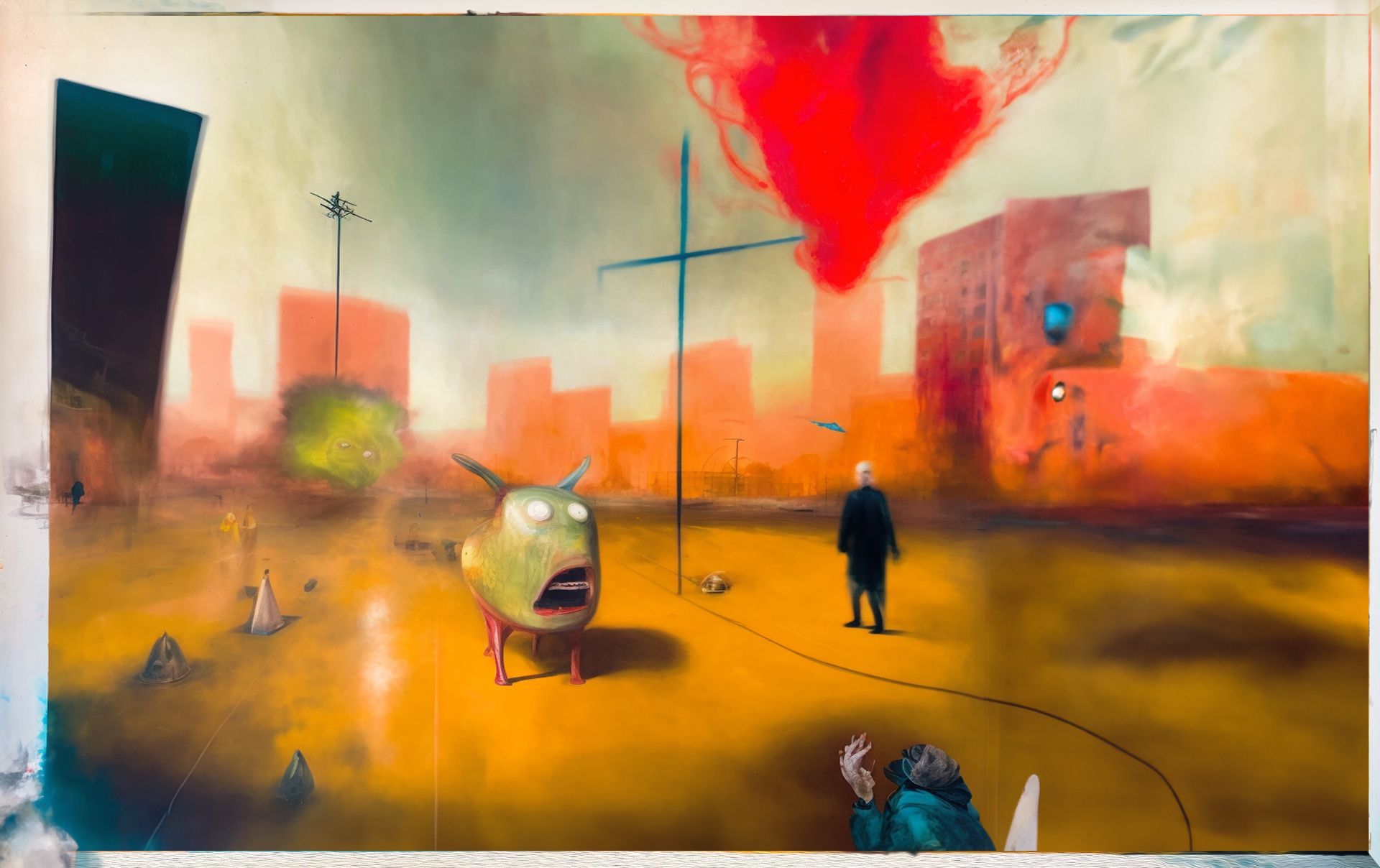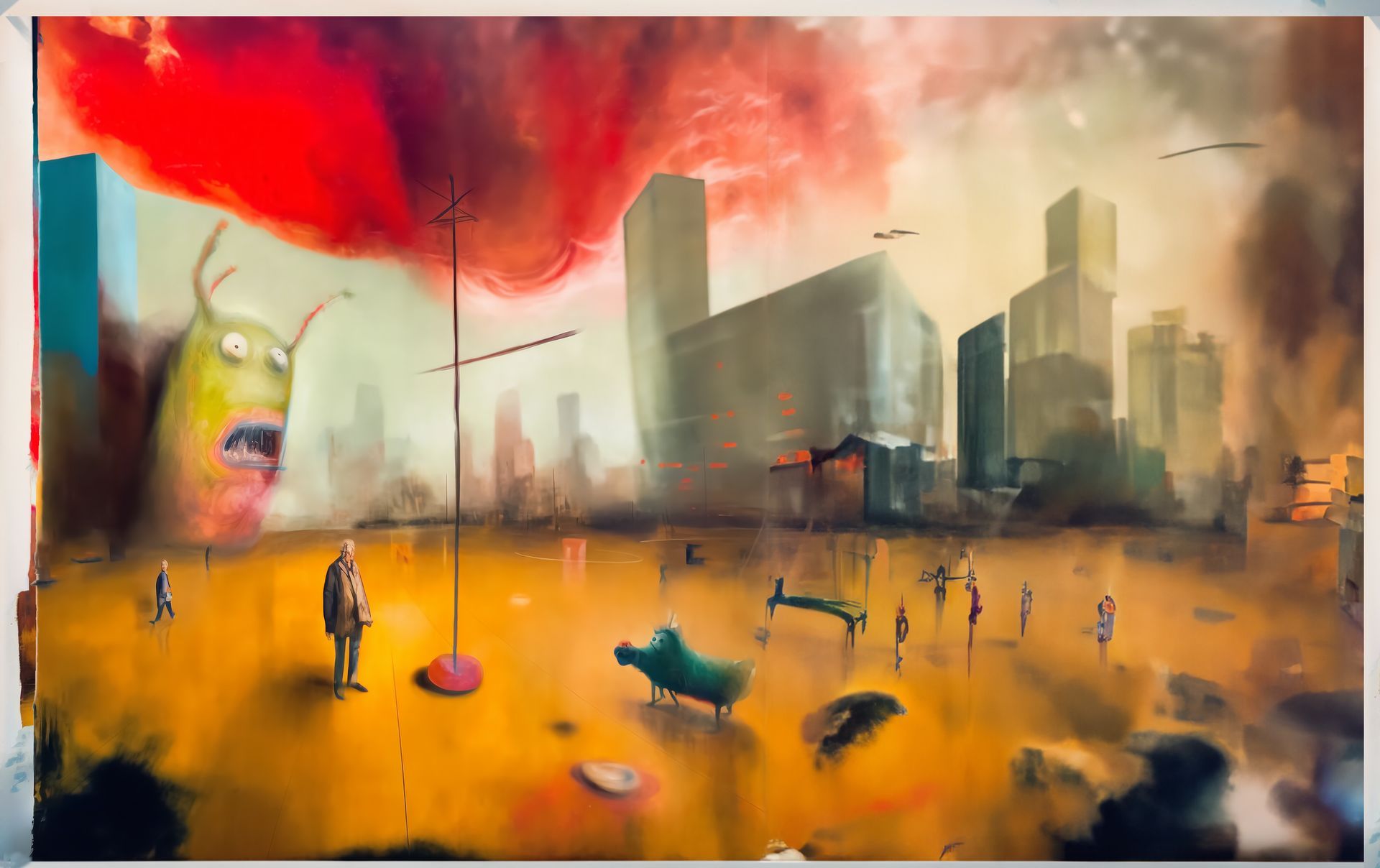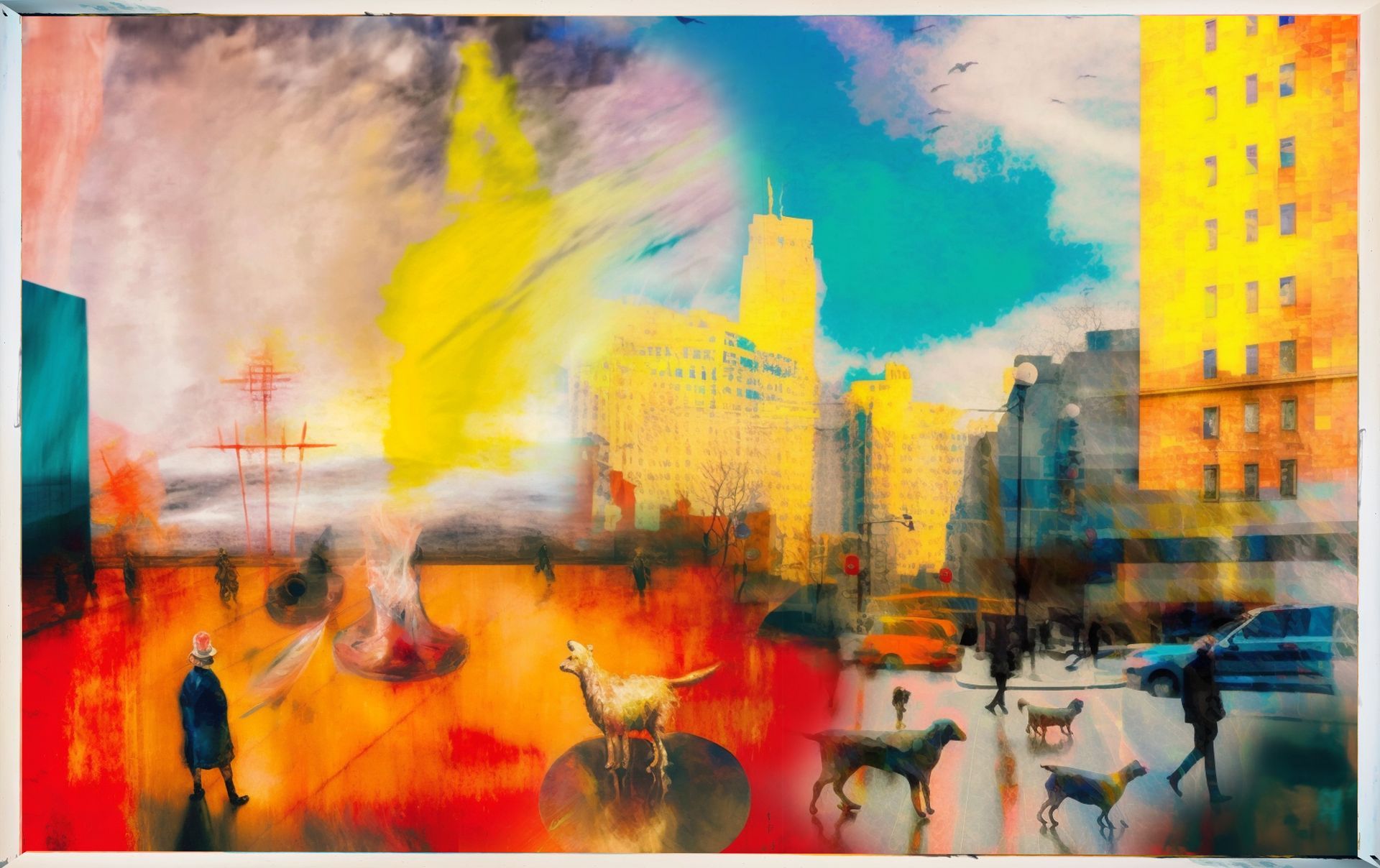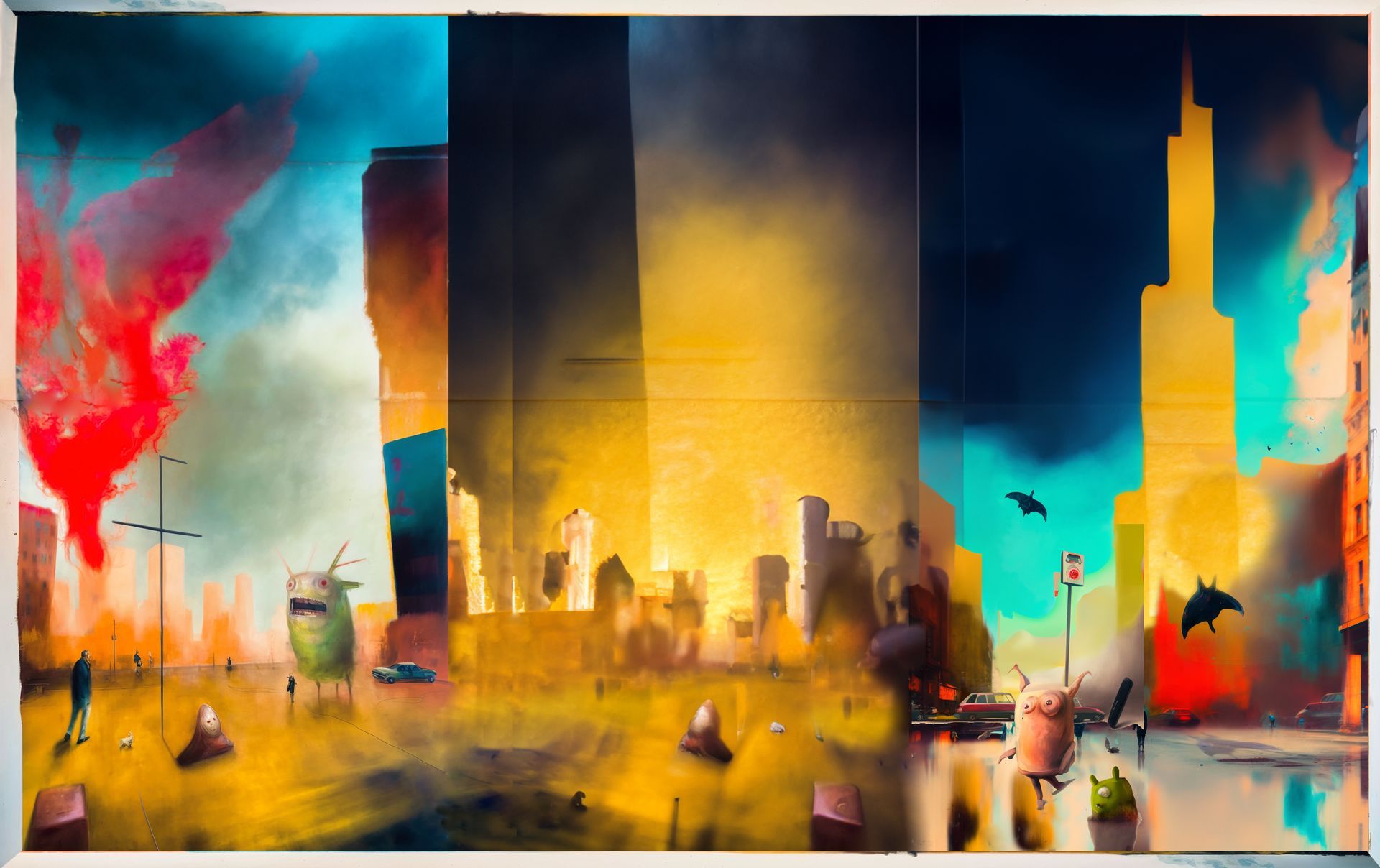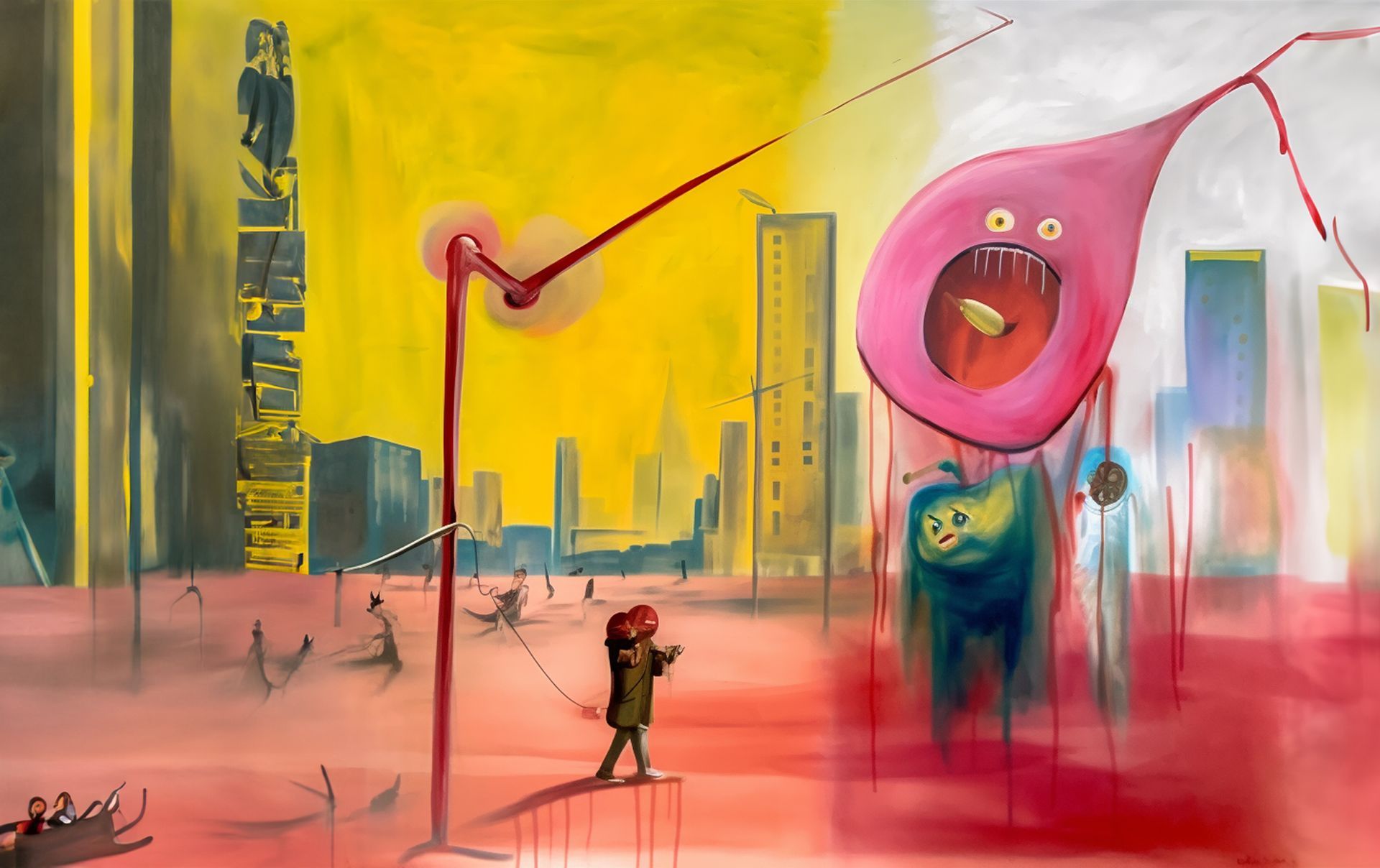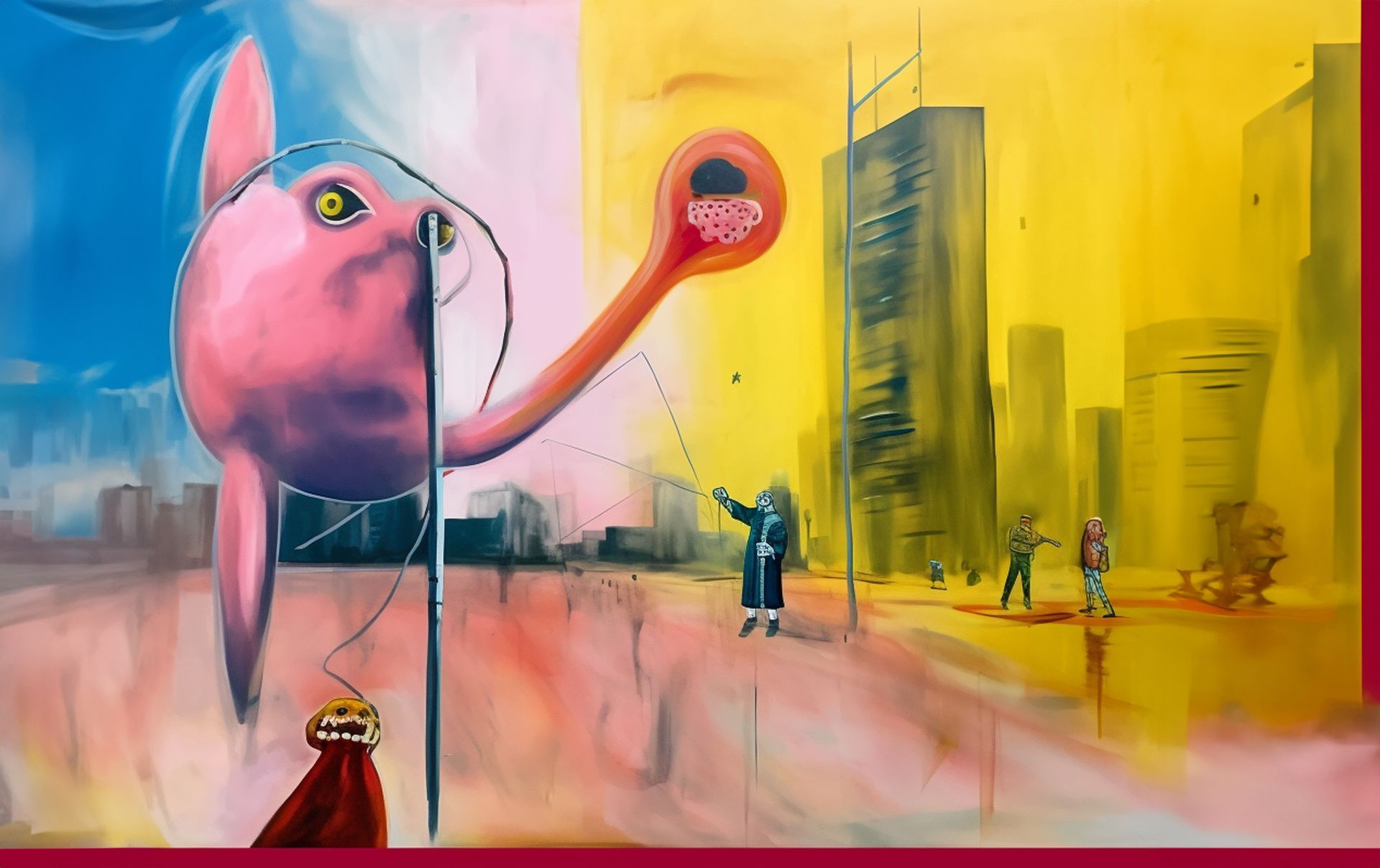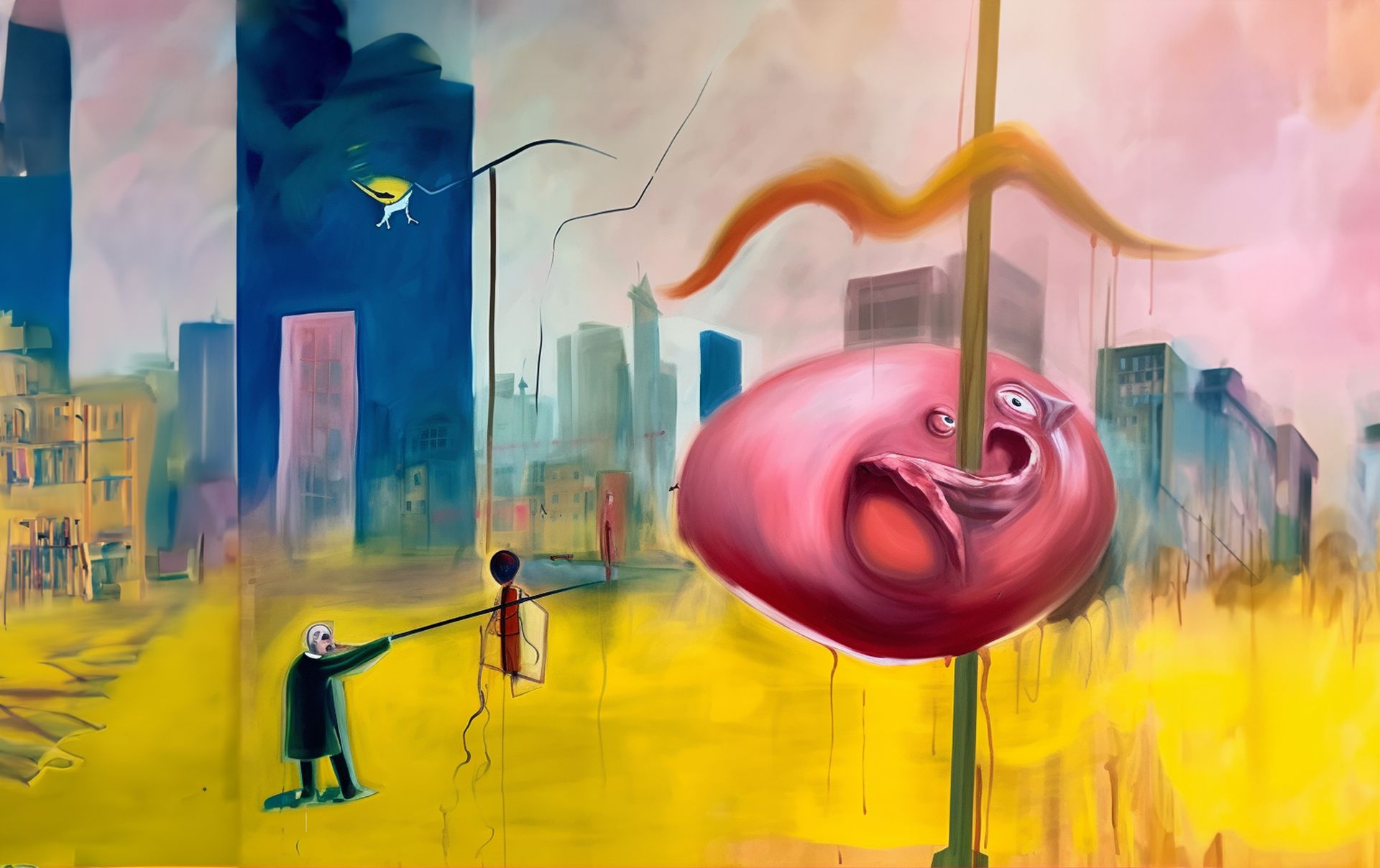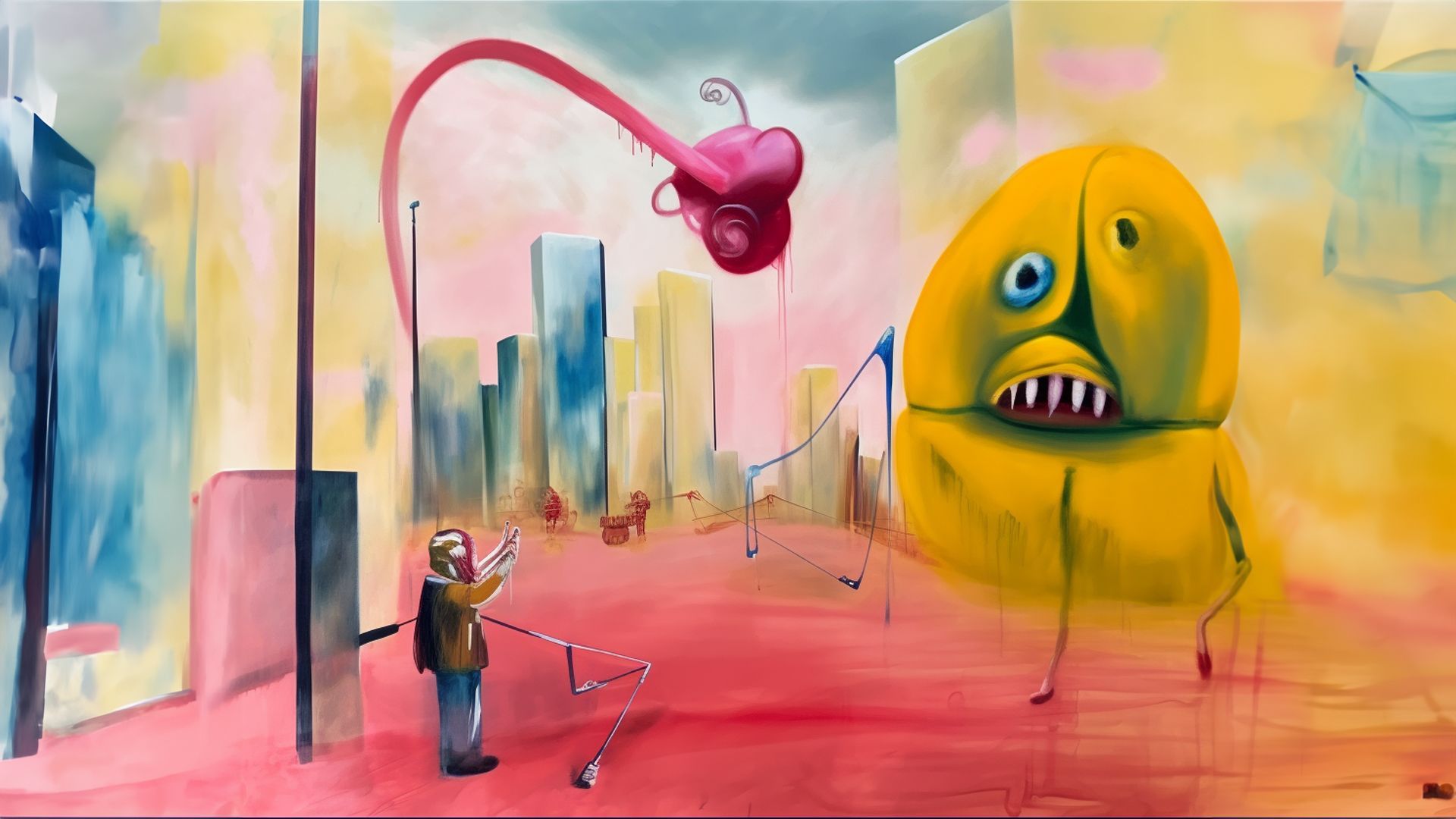Hallucinations
Seeing through the eyes of AI
I asked DALLE-2 to take a look at one of my paintings. Within seconds, the Generative Artificial Intelligence agent had produced a string of novel images with a fluidity and dynamism that I was struggling to achieve.
It seemed to have an uncanny ability to understand the alchemy of paint and imitate it. And even more spookily, it began to introduce characters and narratives that seemed to emerge from its own sensibilities – not mine.
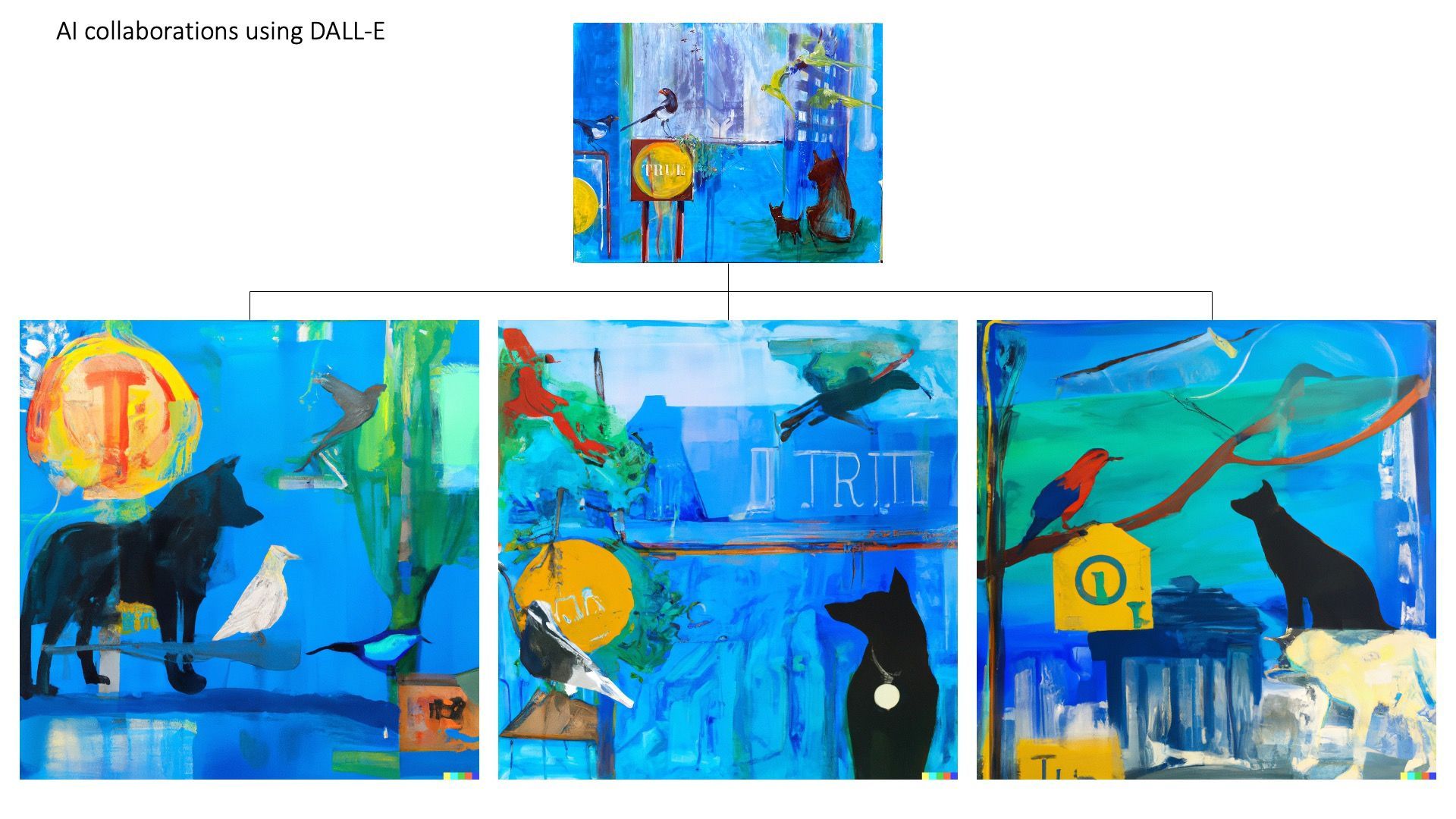
I began working with another AI app: Midjourney. This appears to offer greater control and nuance. But it also seems to have strong convictions of its own.
By combining these outputs with other applications, such as Photoshop's Generative Fill, together we began to generate paintings reflecting on the idea of Shakespeare walking to work along Bishopsgate. His head full of words.
What are these? They look like paintings, but they're not paintings. They don't smell or feel like paintings. Because they emerge fully realised out of the software, we have no physical relationship with each other. They lack the shared experience of materiality that paintings confer. The synthesis of labour, skill and judgement to bring into being a real, physical entity. So what are they?
I began to worry that I was taking too dominant a role in this partnership. AI is so good at re-creating photographic interpretations of the world, and can call upon such a diverse range of styles and influences, why was I forcing it down such a narrow path? The essence of successful creative partnership is the give-and-take. Am I taking too much and not listening enough? Am I 'Humansplaining' when I should be listening more?
AI can do anything. But it seems always ready to learn more. I loved its facility with paint; the fluid handling of drip and soak; the skill in retaining the intensity of colours without letting them pollute each other. And then I would remember that it isn't paint. Just pixels. And images are lies. Or, more accurately perhaps, hallucinations.
What should we work on together?
I suggested my idea about Shakespeare. How I imagined him walking to work in the morning from his rented lodgings inside the City wall, through the gate, then north along Bishopsgate towards his place of employment in dodgy Shoreditch. And how that mirrored my own walk along the same route to work more than 400 years later.
The task was to find a vehicle to explore that sensation of entanglement. The peculiar sense of significance. This observation deserved closer inspection, trivial as it seemed. To do that I would have to attempt what so many others in the past have tried – to inhabit his head by imagining oneself into it.
I suspect that what the harried actor, profit sharer and playwright in a competitive market was thinking about as he walked to work – was work. And his work was words. Even though I'm not especially interested in his plays themselves, I do like some of the words.
